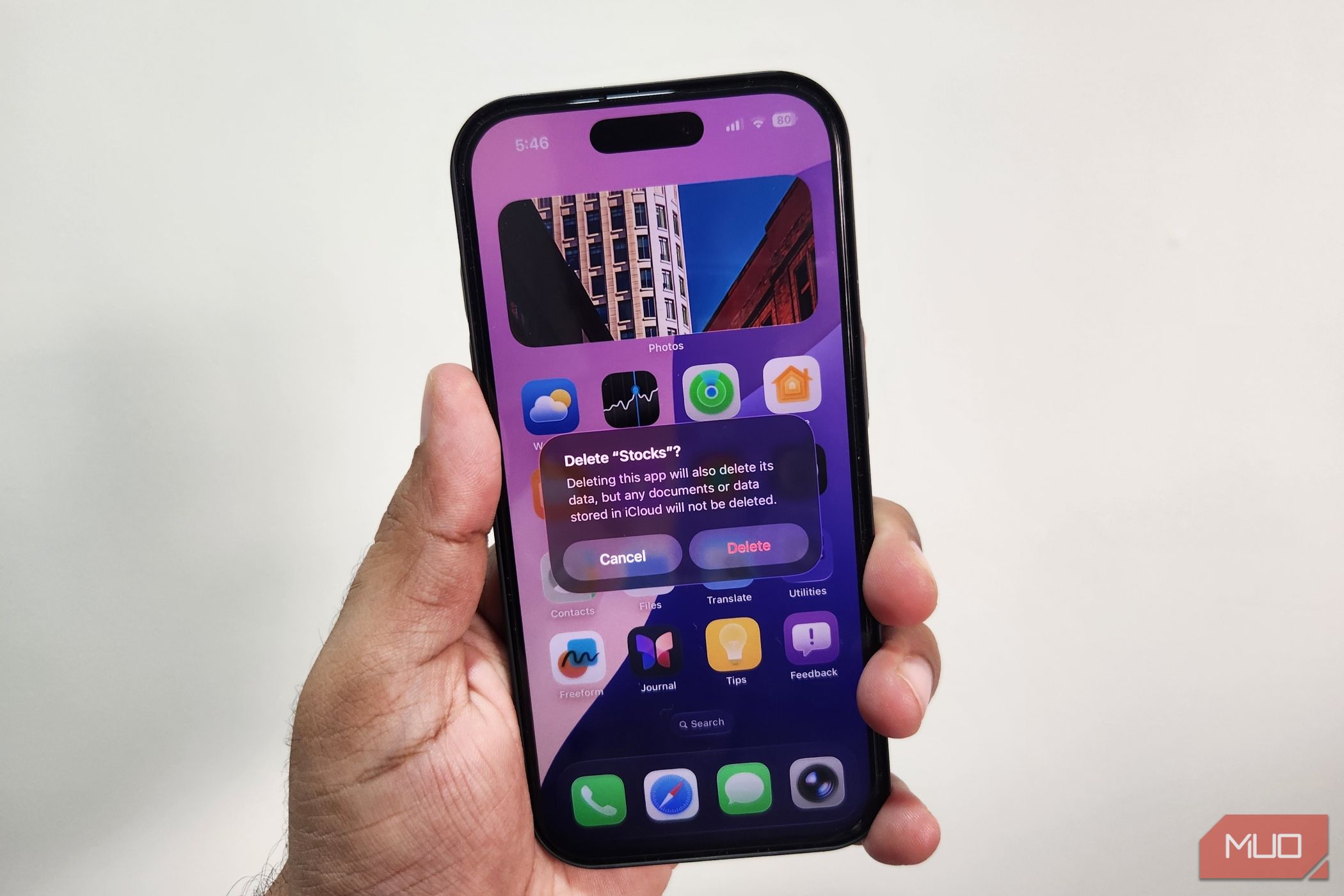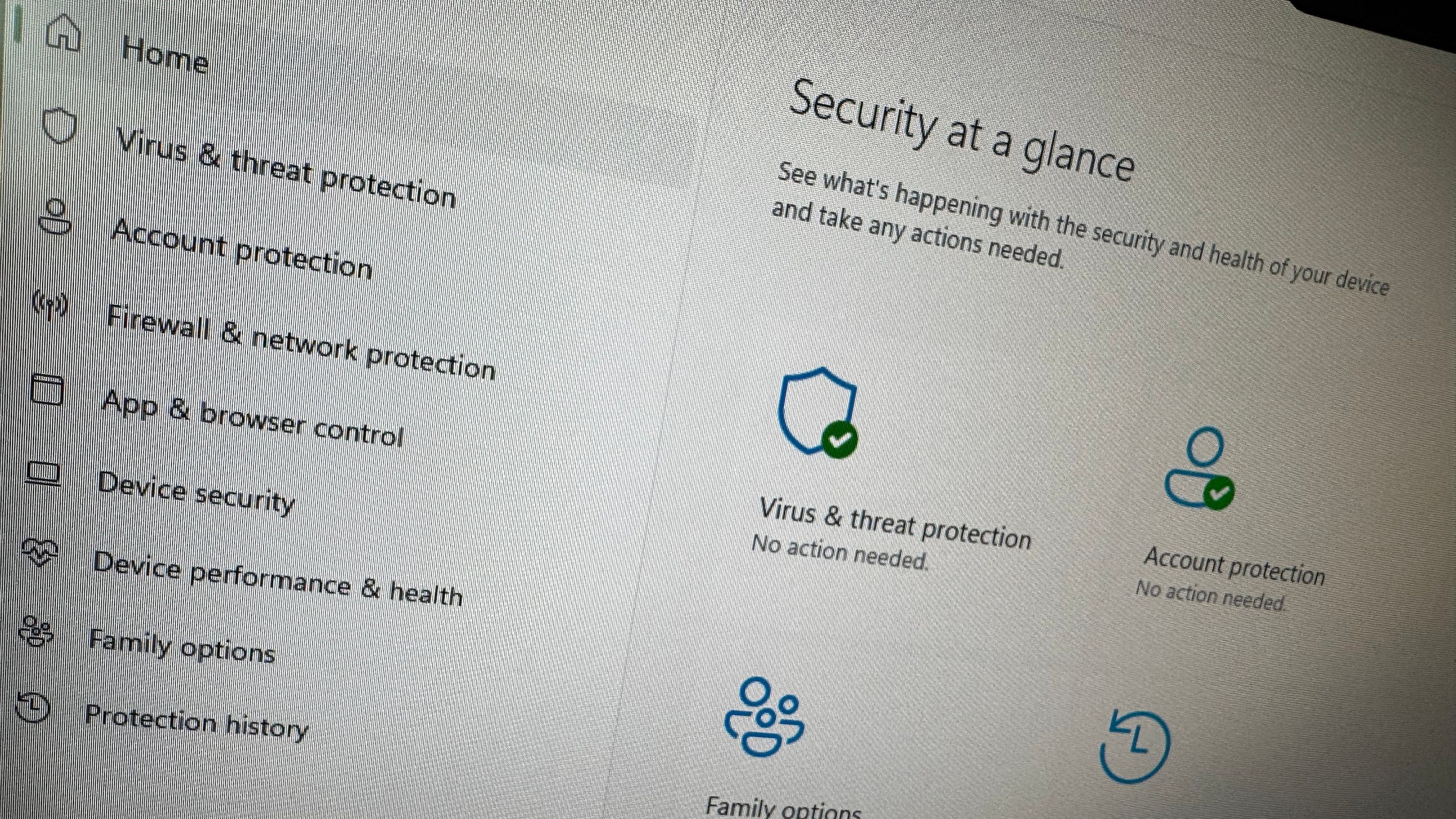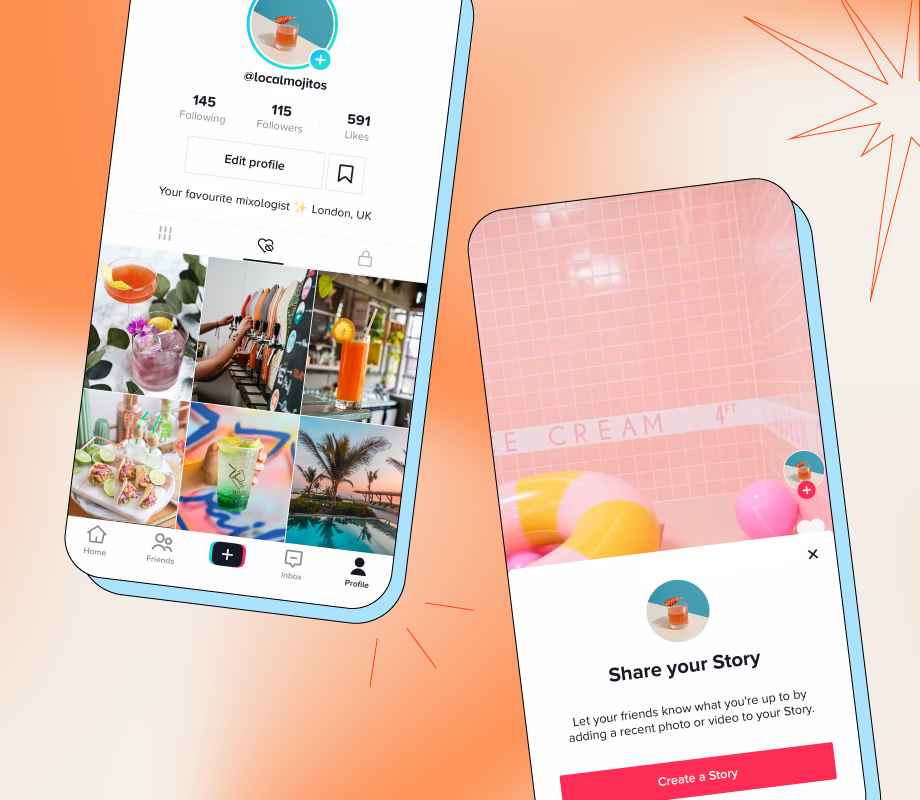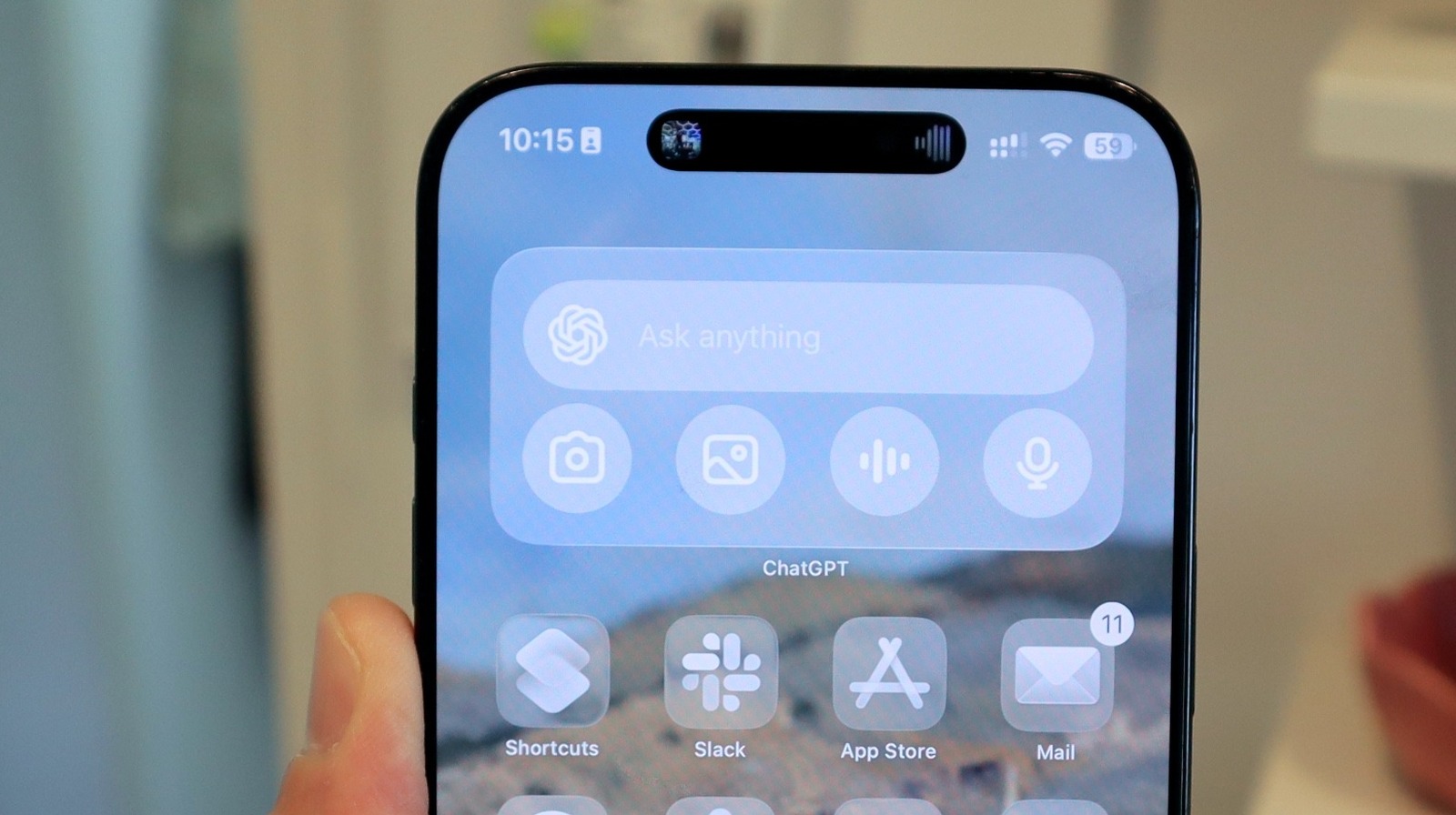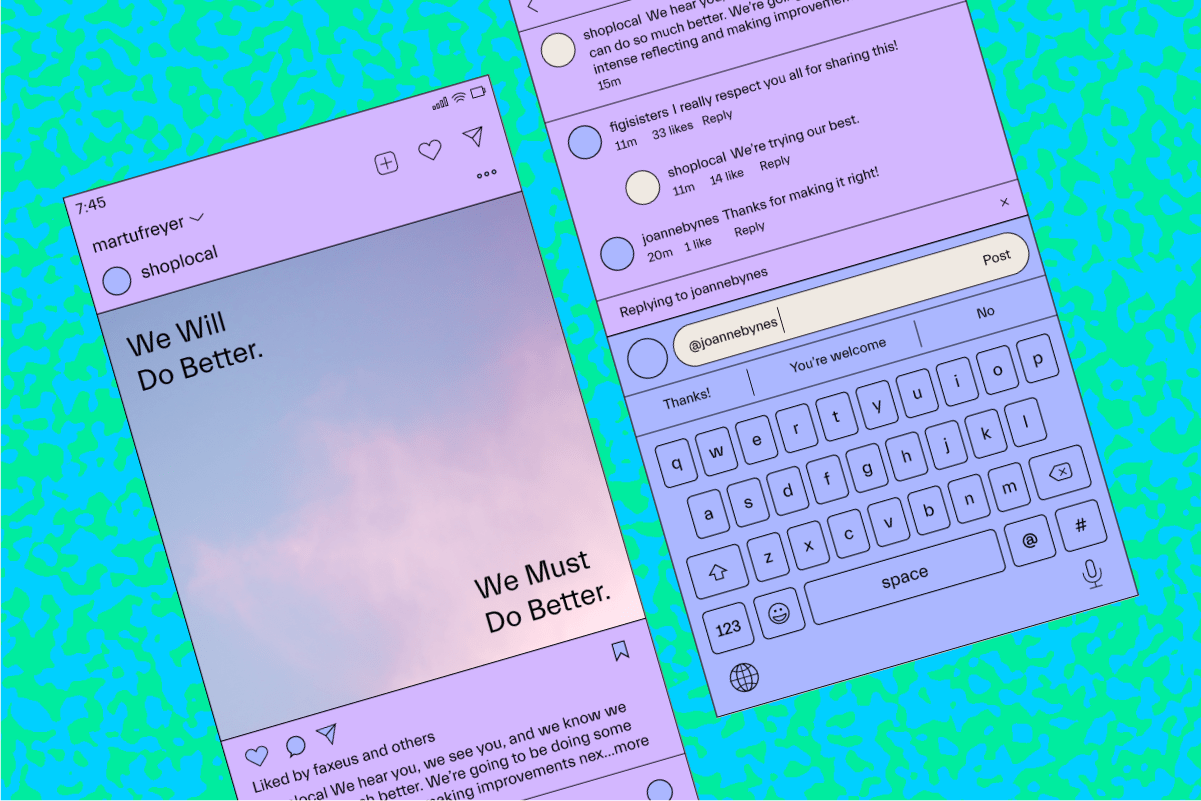Your iPhone comes with dozens of apps preinstalled to get you started, but not all of them are worth keeping. Sure, some are genuinely useful and indispensable, but others just sit there without offering much value. Thankfully, Apple makes it easy to uninstall them.
10
Compass
The Compass app on your iPhone can… point north. It also shows directions, degrees, and altitude—but that’s about where its usefulness ends. You can’t use it for anything else, which makes the Compass app feel more like a novelty than a necessity.
Like everyone, my iPhone also has a few apps I keep around, hoping I’ll need them one day. But Compass doesn’t even make that list, so it’s one of the first apps I’ve deleted from my iPhone.
9
Stocks
The Stocks app has been a part of iPhones since day one. It does what you’d expect: tracks the market, shows live updates on your favorite companies, and delivers quick financial news. For anyone who’s only casually curious about the stock market, it is perfectly fine.
However, if you’re a serious investor like me, you likely already have a dedicated finance app that does everything the Stocks app does and also lets you monitor your holdings. This makes the Stocks app feel redundant, so it doesn’t really make sense to keep it.
8
Freeform
Freeform is one of the newest apps that Apple launched in late 2022. It works as a digital whiteboard where you can jot notes, draw, sketch, or visually organize ideas. The app is also available on iPad and Mac, which means you can sync your boards seamlessly across devices.
All of this sounds useful in theory, but Freeform isn’t for everyone. If digital whiteboards aren’t part of your workflow, or if you’re like me and prefer traditional note-taking apps, Freeform isn’t an app that’ll excite you. There are also better whiteboard alternatives that offer cross-platform syncing with Android and Windows.
7
Journal
Journal is Apple’s built-in app for tracking thoughts, memories, and daily reflections. It lets you add text, photos, and even activity highlights, creating a digital diary. One of its best features is the ability to automatically suggest content from your photos, location, and health data, which makes it easy to create entries quickly.
Journaling isn’t something I prefer, though. If you are in the same boat, or if another app is already handling your notes and reflections, the Journal app doesn’t offer much else. In that case, you can safely delete it to free up space on your iPhone.
6
Books
Apple’s Books app lets you explore, read, and listen to a wide variety of titles right from your iPhone. It offers a clean interface, syncs across Apple devices, and includes an option to track your reading goals. You can even use the Books app to edit PDFs on your iPhone.
The downside is that for anyone already using Kindle, Audible, or Kobo, the Books app doesn’t bring anything particularly unique to the table. Its library syncing is limited compared with these specialized apps, and its customization options are basic at best. Unless you have a strong attachment to Apple’s ecosystem, Books is another app you can let go.
5
Tips
The Tips app on your iPhone is there to share helpful tricks and hidden features. Honestly, though, it’s something most people ignore—just like the user manual for every product.
If you already know your way around a smartphone, the Tips app doesn’t offer anything that’ll surprise you. And even if you’re using an iPhone for the first time, you’re unlikely to scroll through pages of tips. In fact, you’ll have a much better time exploring the device yourself or looking up guides and videos online.
Another annoyance of keeping the Tips app is the regular notifications it sends, nudging you with suggestions you already know. It’s one of those apps that quietly takes up space without ever earning your attention, so it’s best to remove it from your iPhone.
4
Maps
Don’t get me wrong. Apple Maps isn’t anything like it was when it first launched. It comes packed with all the useful navigation features you might need, including turn-by-turn directions, traffic updates, points of interest, and even features like lane guidance and indoor maps for certain locations.
The problem is that navigation apps come down to personal preference. I, for instance, switch to Android from time to time and prefer using Google Maps for consistency and familiarity. If you already rely on a different navigation app like Waze or HERE WeGo, you’re unlikely to ever open Apple Maps on your iPhone.
Deleting Apple Maps won’t affect your iPhone’s functionality, and you won’t lose any essential features. So if Apple Maps is just sitting there, taking up space, it’s best to get rid of it.
3
Podcasts
If you enjoy listening to podcasts, Apple’s Podcasts app is a solid option. It lets you subscribe to your favorite shows, download episodes for offline listening, and create custom playlists so you can organize content exactly how you like. Also, if you own multiple Apple devices, you can start an episode on your iPhone and pick up right where you left off on your iPad or Mac.

That said, I’ve always preferred using Spotify for podcasts for one simple reason—it’s available on every device I own. My subscriptions, listening history, and playlists are already there, and it keeps both my music and podcasts in one place. For me, Apple Podcasts is one of those apps that never gets opened, so deleting it is an easy decision.
2
Playground
Image Playground is powered by Apple Intelligence, so it’s only available on select iPhone models. It lets you create AI-generated images simply by describing what you want.
You can turn concepts, scenes, or even people from your photo library into original images in unique styles. It’s honestly pretty fun to watch a few words transform into visuals in just seconds.
For me, Image Playground is one of those apps that I’d open, play around with for a few minutes, and then forget about entirely. Even if you enjoy seeing your ideas come to life this quickly, there are plenty of other AI image generators that do a much better job. This makes Image Playground not worth keeping.
1
iTunes Store
I’m honestly surprised the iTunes Store is still part of the iPhone. If you’re not familiar, it’s where you can buy music, movies, and TV shows outright. It works perfectly well, but it feels like it belongs to another era. Really, when was the last time you actually purchased an album or film instead of streaming it?
Between Spotify, Netflix, and the other streaming services I use, I already have more entertainment than I can keep up with. The idea of paying per album or movie just doesn’t fit my habits anymore. Everything I want is either included in a subscription or available through another app I already use daily. That makes the iTunes Store one of those pre-installed apps I delete without hesitation.
The list above isn’t about hating on Apple’s apps. In fact, Apple makes plenty of excellent apps that don’t come preinstalled, and I have downloaded a few of them on my iPhone.
At the end of the day, it’s all about keeping the ones you love and letting go of the ones that just take up space. So, don’t hesitate to delete the apps you don’t find useful. If you ever need them, you can always download them again from the App Store.

